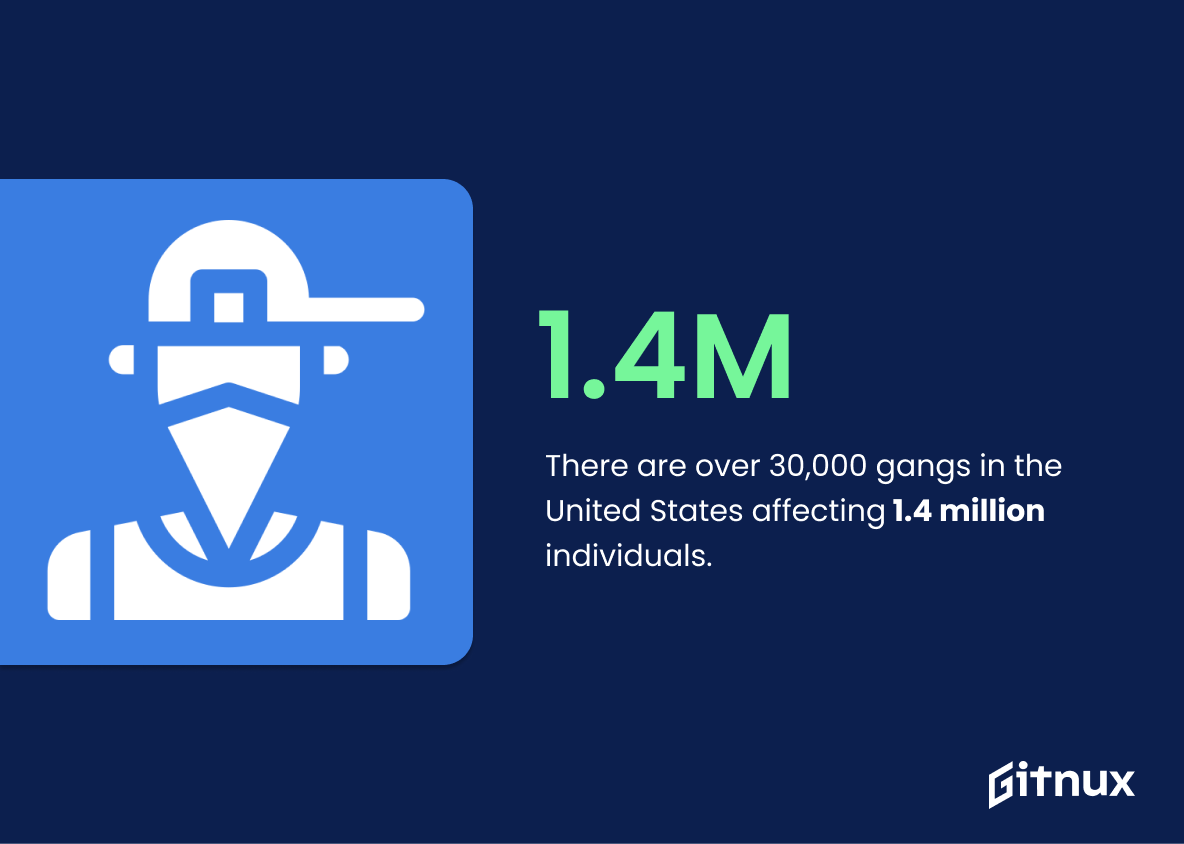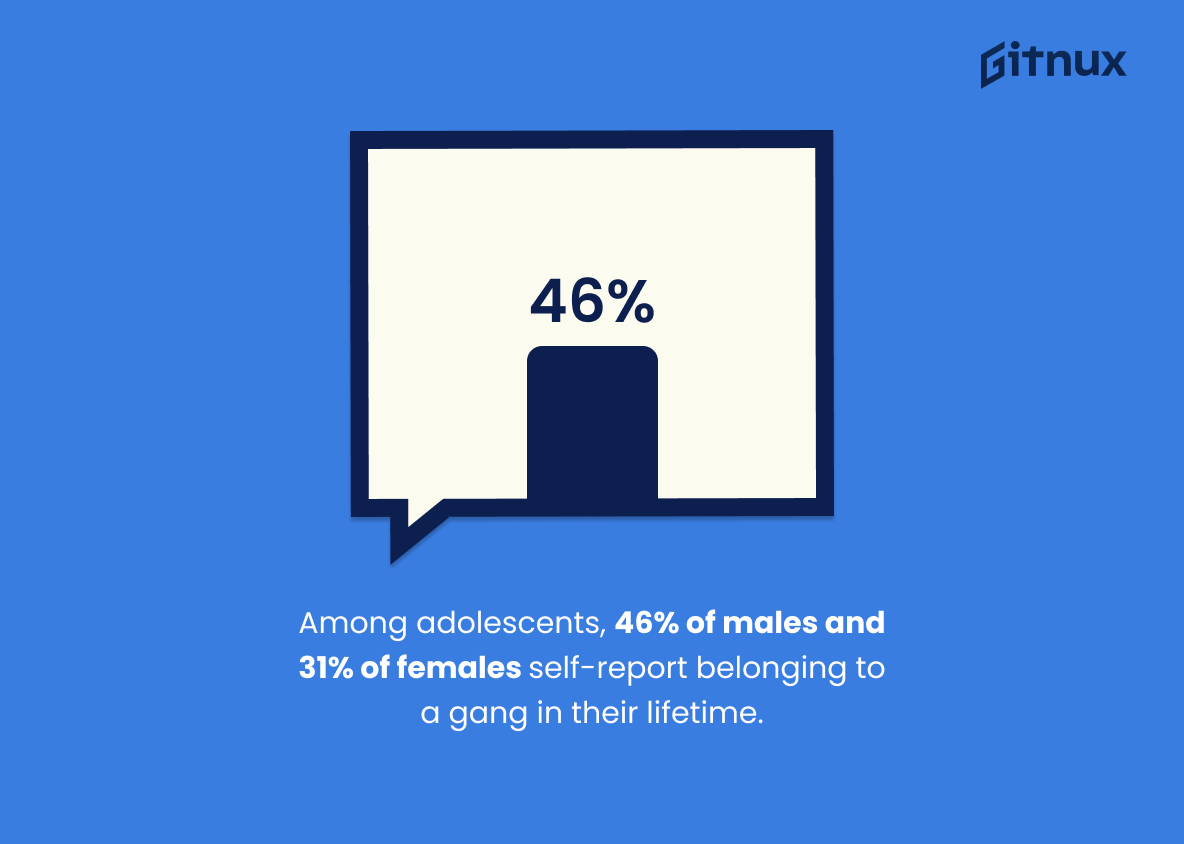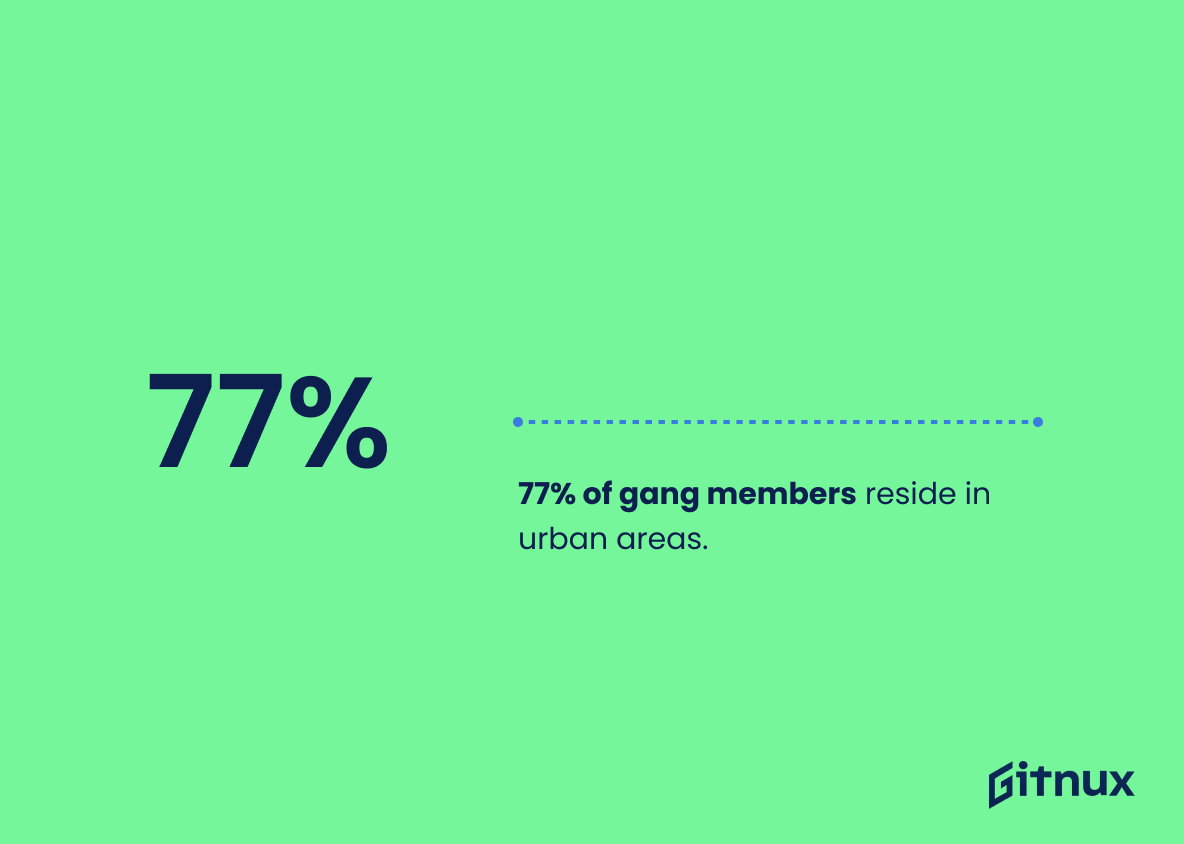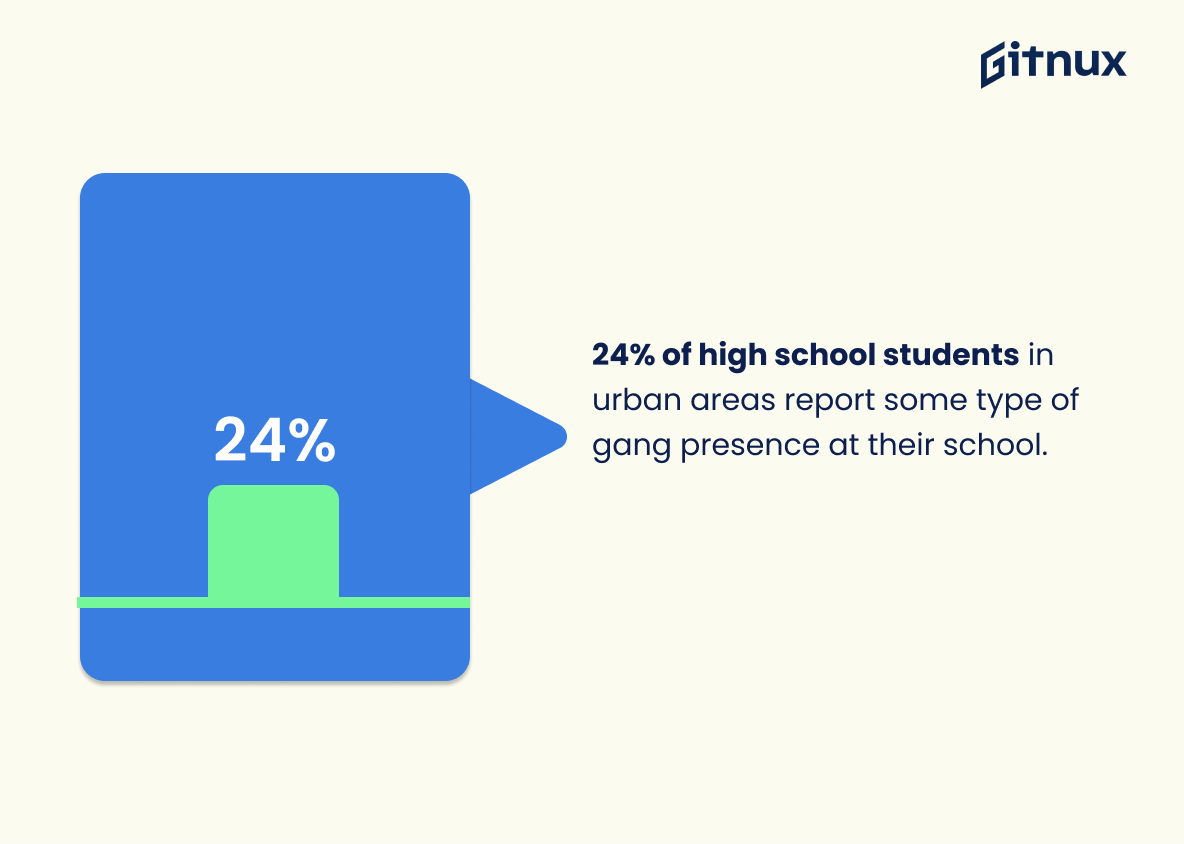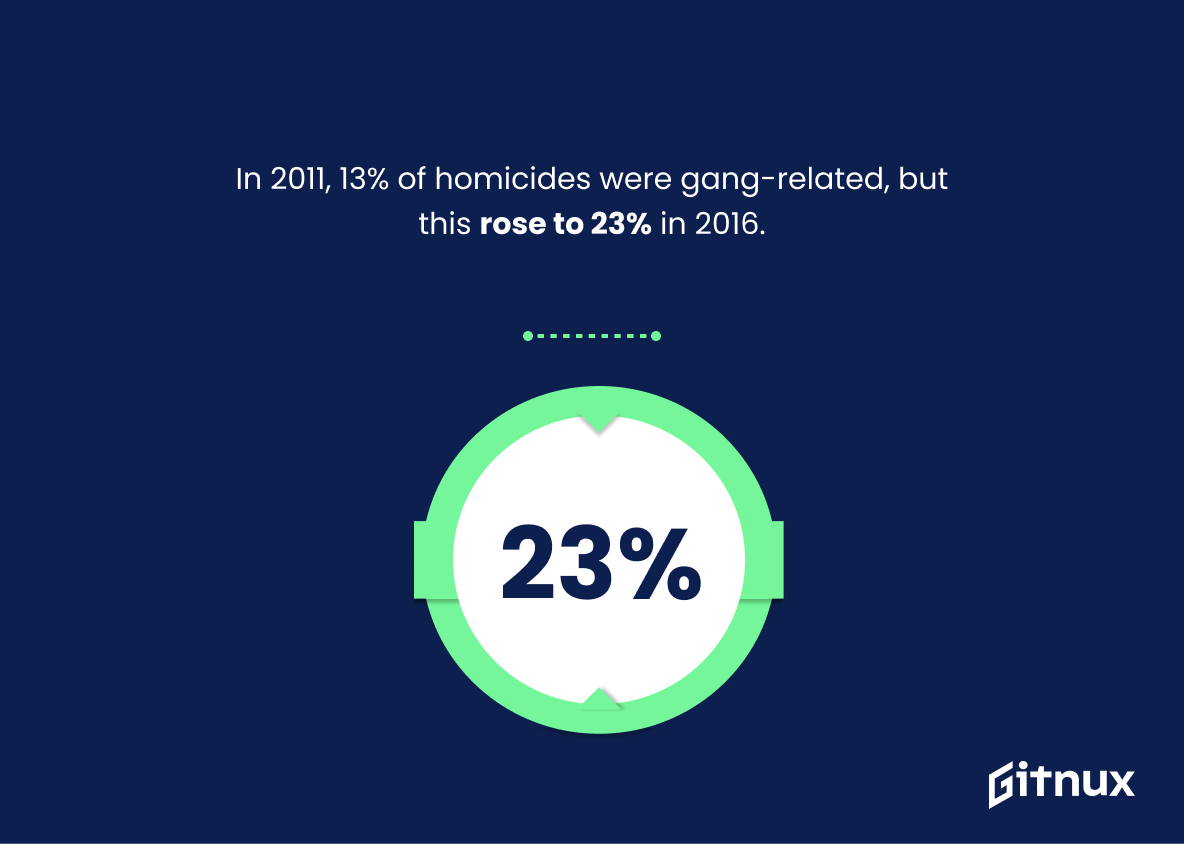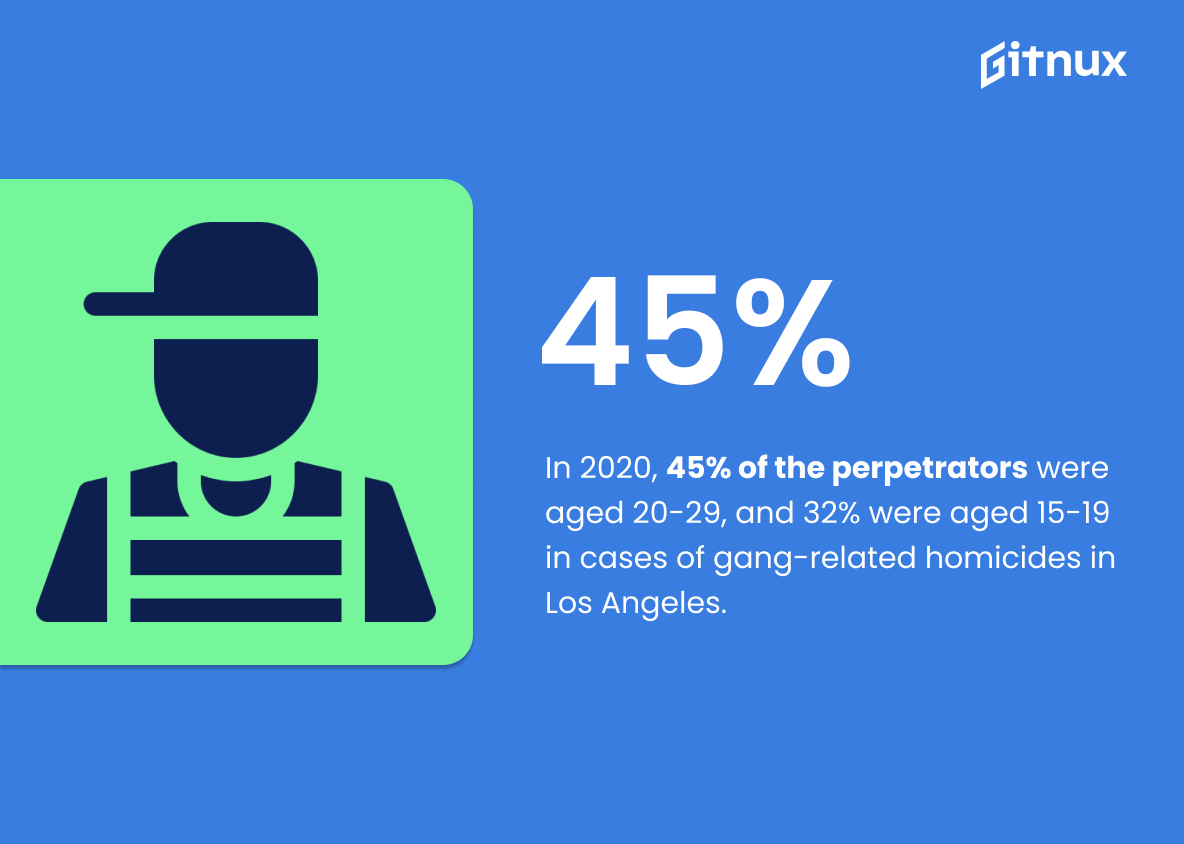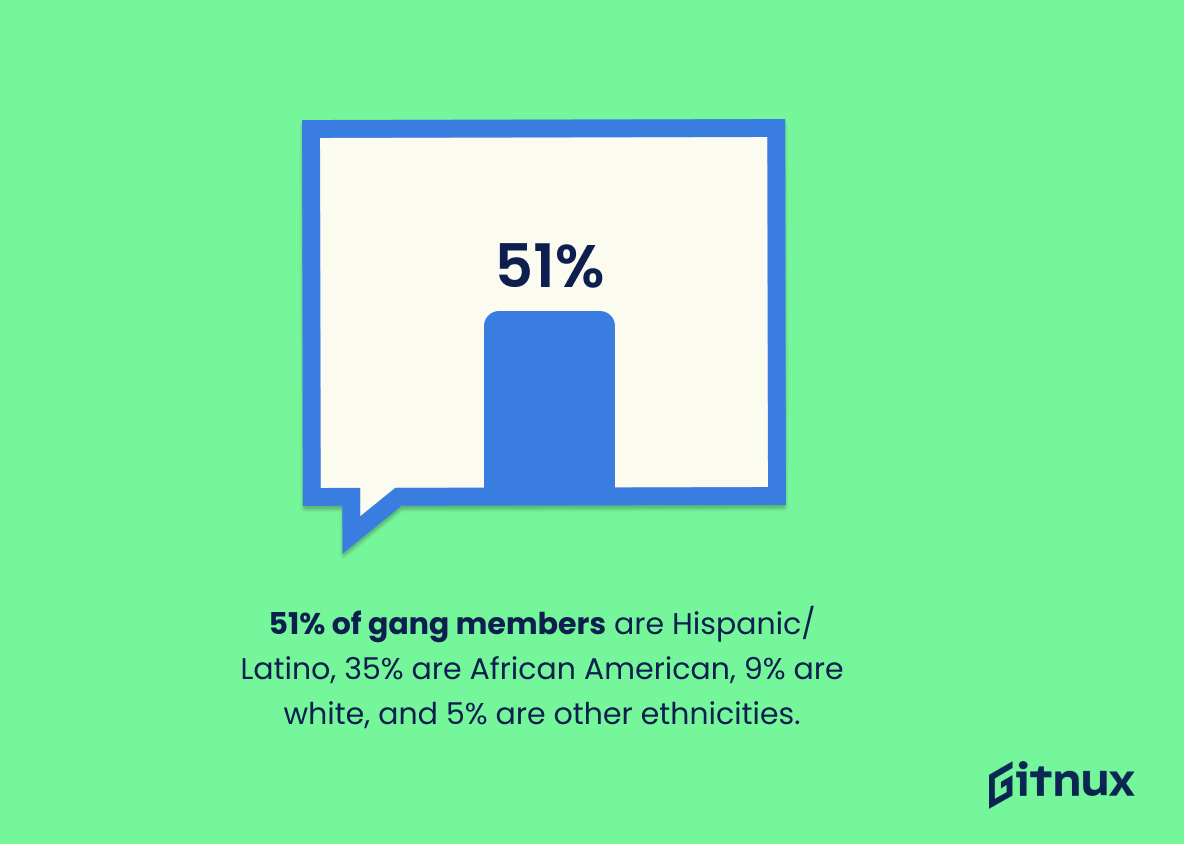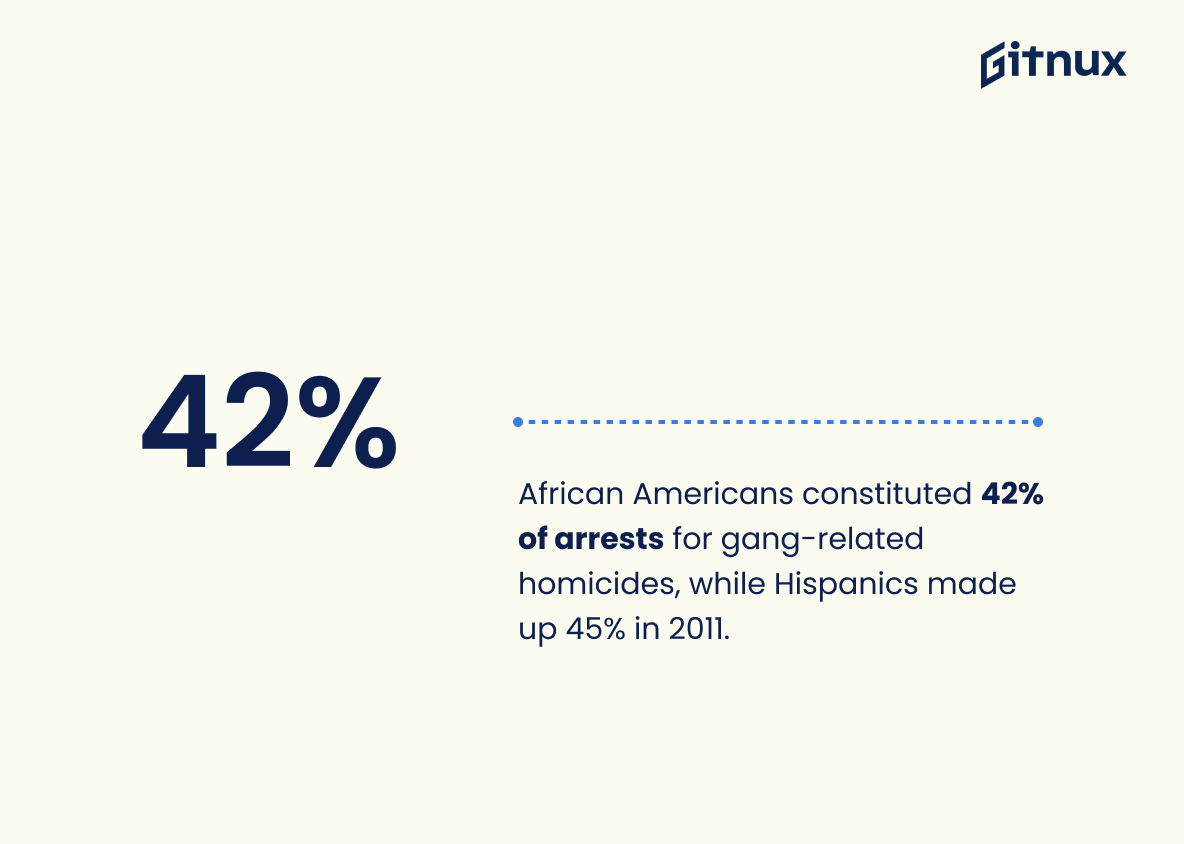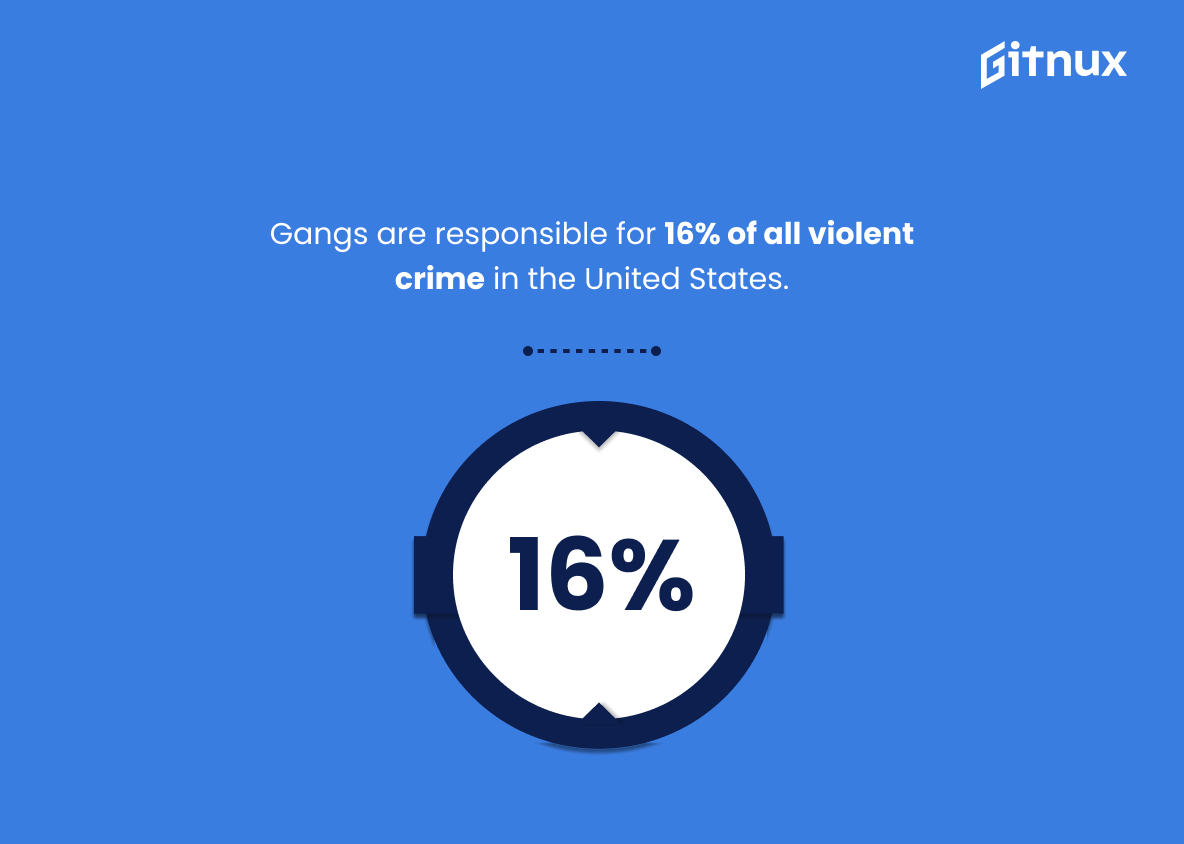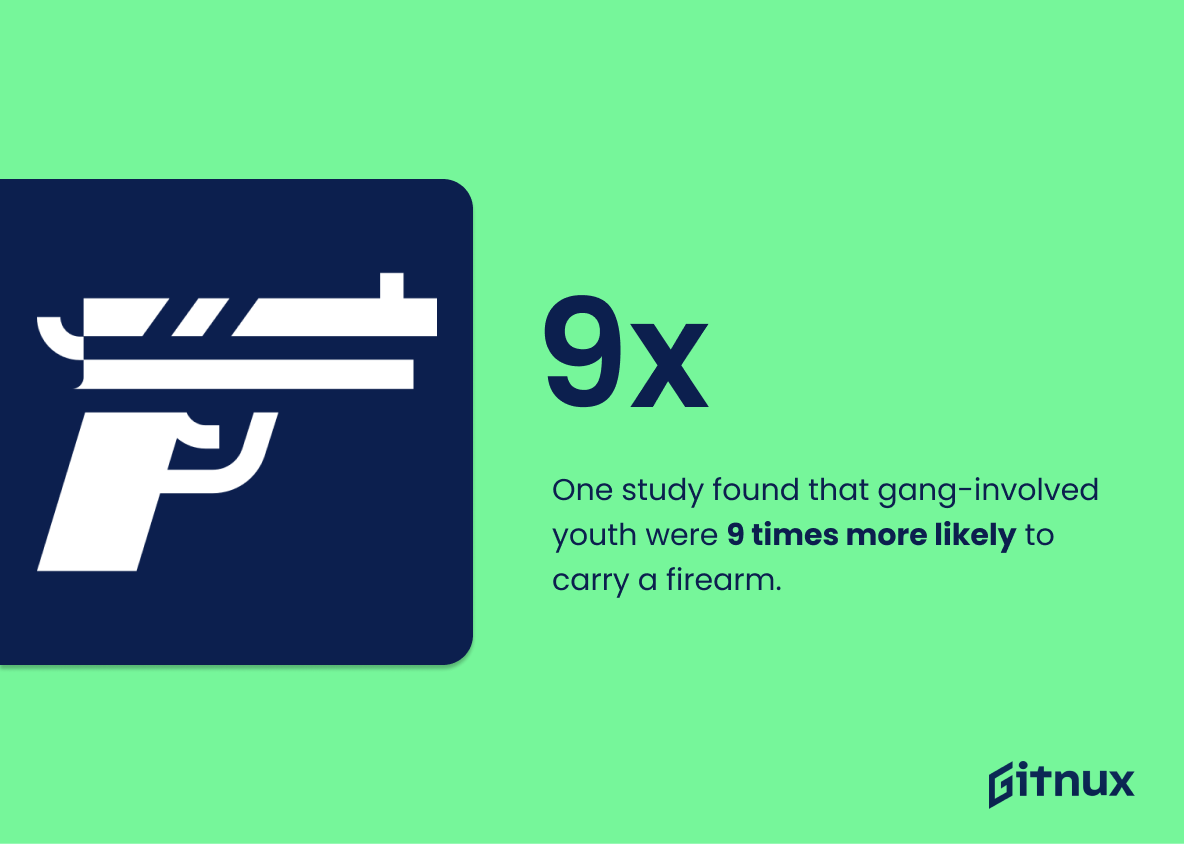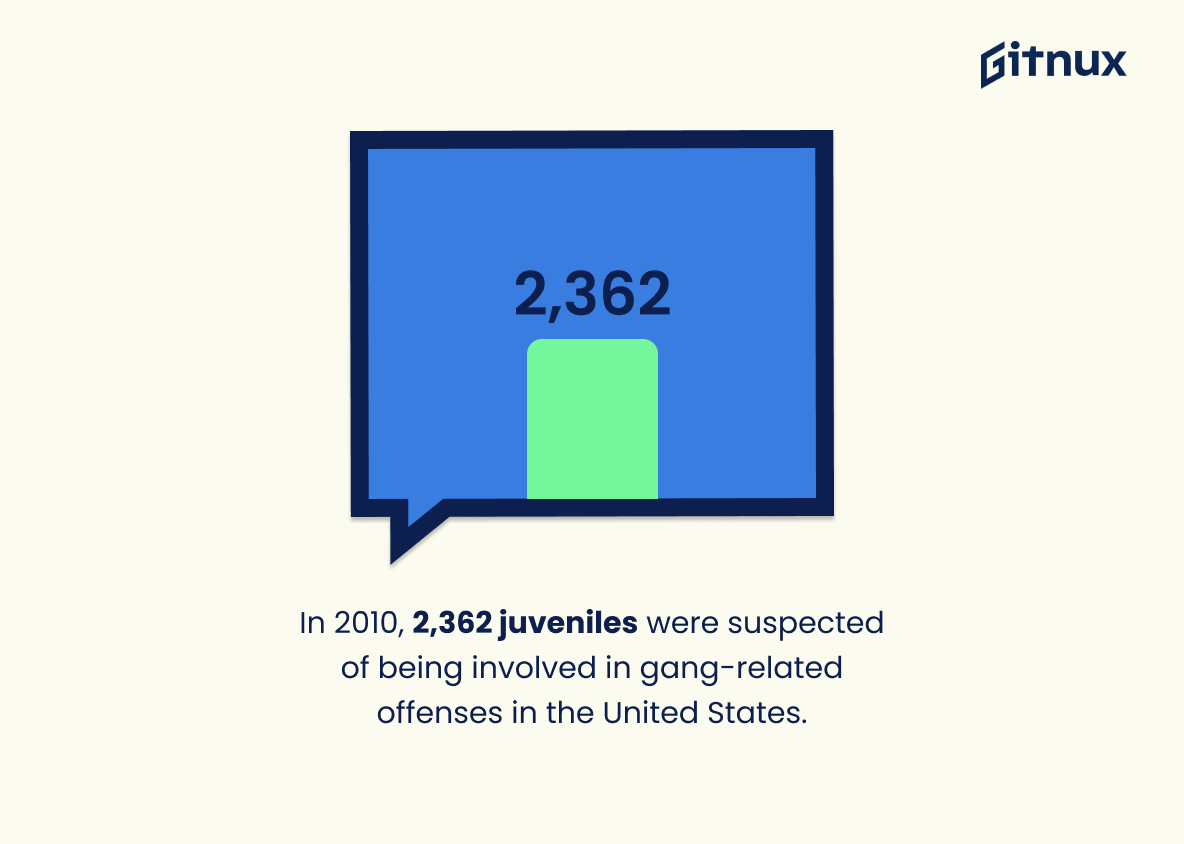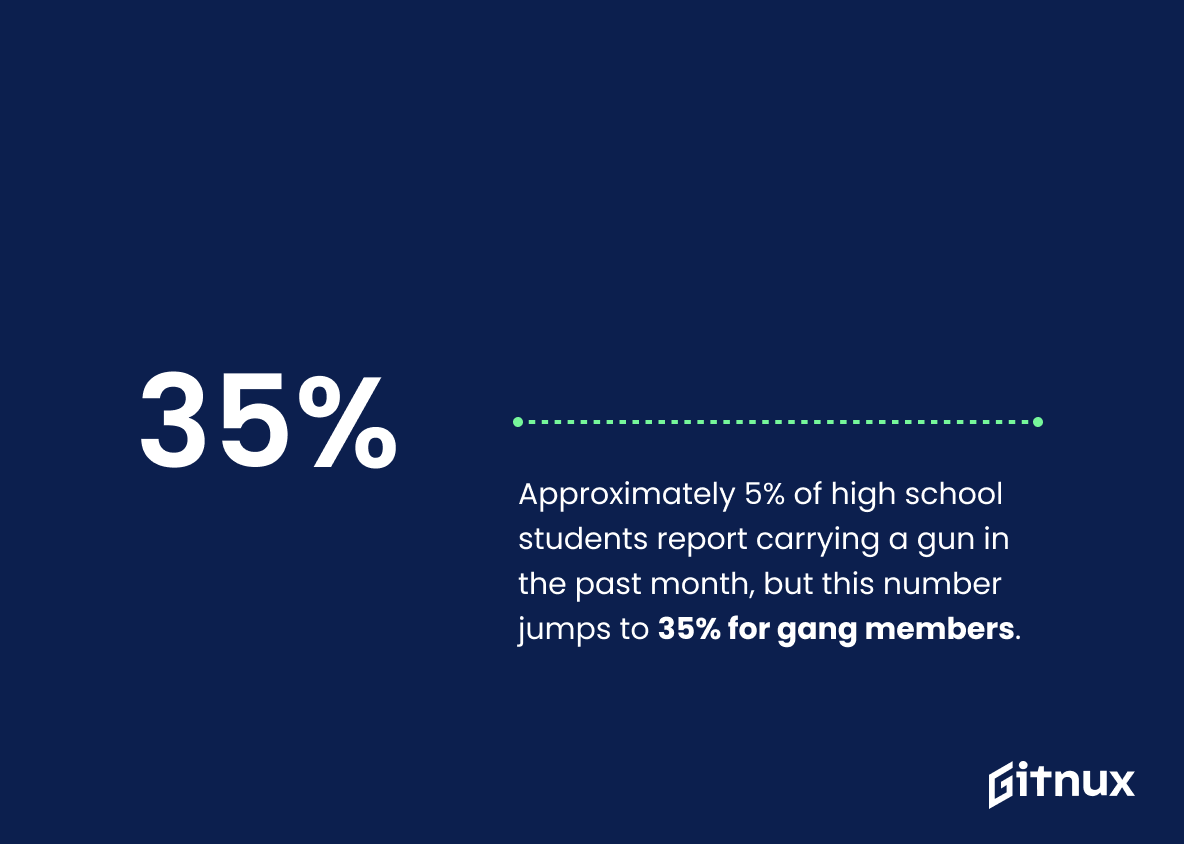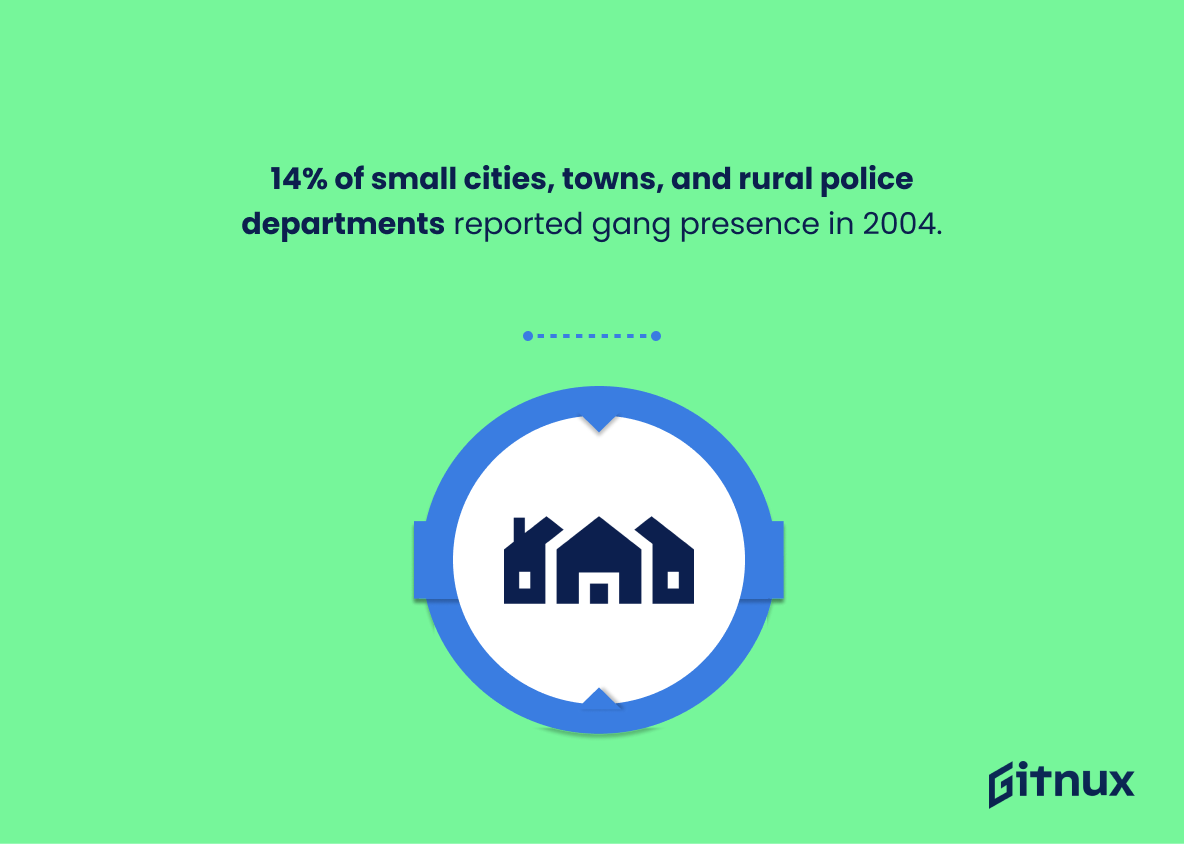Gang violence is a serious issue in the United States, with an estimated 200,000 teens involved in gangs and over 30,000 active gangs.
The presence of gang activity has increased by 8% from 2011 to 2012 and affects 1.4 million individuals across the country. This blog post will explore some key statistics about teen gang violence that demonstrate its prevalence and impact on communities nationwide.
Teen Gang Violence Statistics Overview
There are over 30,000 gangs in the United States affecting 1.4 million individuals.
This statistic is a stark reminder of the prevalence of gang violence in the United States. It paints a vivid picture of the sheer number of gangs and the individuals they affect, highlighting the magnitude of the issue. It serves as a call to action, emphasizing the need for greater awareness and prevention of teen gang violence.
Among adolescents, 46% of males and 31% of females self-report belonging to a gang in their lifetime.
This statistic is a stark reminder of the prevalence of gang involvement among adolescents, particularly among males. It highlights the need for greater awareness and prevention of gang violence among teens, as well as the need for more resources to help those who have already been affected by it.
77% of gang members reside in urban areas.
This statistic is a crucial indicator of the prevalence of gang violence in urban areas. It highlights the need for increased awareness and prevention efforts in these areas, as well as the need for more resources to help those affected by gang violence.
24% of high school students in urban areas report some type of gang presence at their school.
This statistic is a stark reminder of the prevalence of gang violence in urban areas, particularly among high school students. It highlights the need for increased awareness and prevention efforts to protect young people from the dangers of gang involvement. It also serves as a call to action for parents, educators, and community leaders to take steps to ensure that their schools are safe and free from gang activity.
In 2011, 13% of homicides were gang-related, but this rose to 23% in 2016.
This statistic is a stark reminder of the growing prevalence of gang-related homicides in recent years. It serves as a warning that teen gang violence is on the rise and that more needs to be done to address this issue.
In 2020, 45% of the perpetrators were aged 20-29, and 32% were aged 15-19 in cases of gang-related homicides in Los Angeles.
This statistic paints a vivid picture of the age groups most affected by gang-related homicides in Los Angeles in 2020. It highlights the fact that the majority of perpetrators were young adults and teenagers, indicating that gang violence is a problem that disproportionately affects the youth.
51% of gang members are Hispanic/Latino, 35% are African American, 9% are white, and 5% are other ethnicities.
This statistic is a crucial indicator of the disproportionate impact gang violence has on certain ethnic groups. It reveals that Hispanic/Latino and African American teens are disproportionately affected by gang violence, while white teens are comparatively less affected. This highlights the need for targeted interventions to address the underlying causes of gang violence in these communities.
African Americans constituted 42% of arrests for gang-related homicides, while Hispanics made up 45% in 2011.
This statistic is a stark reminder of the disproportionate impact gang violence has on African American and Hispanic communities. It highlights the need for targeted interventions to address the underlying causes of gang violence in these communities. It also serves as a call to action for policy makers to take steps to reduce gang violence and its devastating effects.
48% of gang members join before the age of 15, and 74% join before the age of 18.
This statistic is a stark reminder of the alarming reality that many teens are exposed to gang violence at a young age. It highlights the need for early intervention and prevention strategies to protect young people from the dangers of gang involvement. It also serves as a warning to parents and guardians to be aware of the signs of gang involvement and to take steps to protect their children from the risks associated with gang activity.
Gangs are responsible for 16% of all violent crime in the United States.
This statistic is a stark reminder of the prevalence of gang violence in the United States. It highlights the need for greater awareness and action to address the issue of teen gang violence. It also serves as a call to action for communities to come together to find solutions to this growing problem.
One study found that gang-involved youth were 9 times more likely to carry a firearm.
This statistic is a stark reminder of the dangers posed by teen gang violence. It highlights the fact that gang-involved youth are far more likely to be armed, making them a greater threat to the safety of their peers and the community at large.
In 2010, 2,362 juveniles were suspected of being involved in gang-related offenses in the United States.
This statistic serves as a stark reminder of the prevalence of gang-related offenses among juveniles in the United States. It highlights the need for greater awareness and prevention of teen gang violence, as well as the need for more effective interventions to help those already involved in gangs.
Approximately 5% of high school students report carrying a gun in the past month, but this number jumps to 35% for gang members.
This statistic is a stark reminder of the prevalence of gun violence among teen gang members. It highlights the need for greater awareness and prevention of gang violence, as well as the need for more resources to help those affected by it.
In a study of Los Angeles gangs, members were responsible for 42% of all drug-related incidents and 89% of all gang-related incidents.
This statistic is a stark reminder of the prevalence of gang-related violence in Los Angeles. It highlights the fact that gangs are responsible for a disproportionate amount of drug-related and gang-related incidents, indicating that gang violence is a major issue in the city.
In 2012, females constituted around 14% of gang membership in smaller cities and rural counties.
This statistic is significant in the context of teen gang violence statistics because it highlights the fact that females are not immune to the dangers of gang involvement. It is important to note that gang membership is not limited to males, and that females are increasingly becoming involved in gangs in smaller cities and rural counties. This statistic serves as a reminder that gang violence is an issue that affects all genders, and that prevention and intervention efforts should be tailored to meet the needs of both male and female gang members.
Between 1994 and 2005, there was a 23% decrease in juvenile arrests for violent crime, while the proportion of gang-related arrests increased by 22%.
This statistic is a telling indication of the changing landscape of juvenile crime. It suggests that while the overall number of violent crimes committed by juveniles has decreased, the proportion of those crimes that are gang-related has increased significantly. This is an important insight into the prevalence of gang violence among teens and the need for effective prevention and intervention strategies.
In 2010, 71% of Hispanic youth reported being approached to join a gang, compared with 51% of African-Americans and 25% of white youth.
This statistic is a stark reminder of the disproportionate impact gang violence has on minority communities. It highlights the need for targeted interventions to address the issue of gang violence among Hispanic and African-American youth, who are more likely to be approached to join a gang than their white peers.
14% of small cities, towns, and rural police departments reported gang presence in 2004.
This statistic is a stark reminder of the prevalence of gang presence in small cities, towns, and rural areas. It serves as a warning that gang violence is not limited to large cities, but can be found in even the most remote of places. This statistic is a call to action for communities to be aware of the potential for gang violence and to take steps to prevent it.
Conclusion
The statistics presented in this blog post demonstrate the prevalence of teen gang violence across the United States. Approximately 200,000 teens are members of gangs and membership has increased by 8% from 2011 to 2012. There are over 30,000 gangs affecting 1.4 million individuals with 77% residing in urban areas and 24% reporting some type of presence at their school. Gang-related homicides have risen significantly since 2011, with 45% perpetrators aged 20-29 and 32% aged 15-19 in 2020 alone. The majority (51%) of gang members identify as Hispanic/Latino while African Americans constitute 42%, whites 9%, and other ethnicities 5%. Furthermore, 48% join before age 15 while 74 % join before 18 years old; they also account for 16 % all violent crime nationwide and 9 times more likely to carry a firearm than non-gang involved youth . Lastly 14 % small cities towns rural police departments reported gang presence 2004 indicating that it is an issue which affects communities both large & small alike . It is clear that teen gang violence remains a serious problem throughout the US requiring further research into prevention strategies & interventions
References
0. – https://www.www.ncbi.nlm.nih.gov
1. – https://www.www.ncjrs.gov
2. – https://www.www.bjs.gov
3. – https://www.www.pacer.org
4. – https://www.www.rwjf.org
5. – https://www.homicide.latimes.com
6. – https://www.youth.gov
7. – https://www.www.fbi.gov
8. – https://www.www.urban.org
9. – https://www.www.nationalgangcenter.gov
10. – https://www.web.stanford.edu
